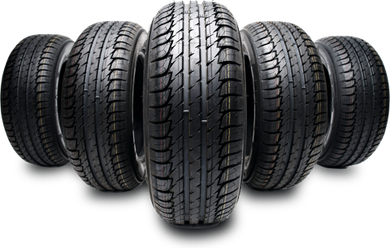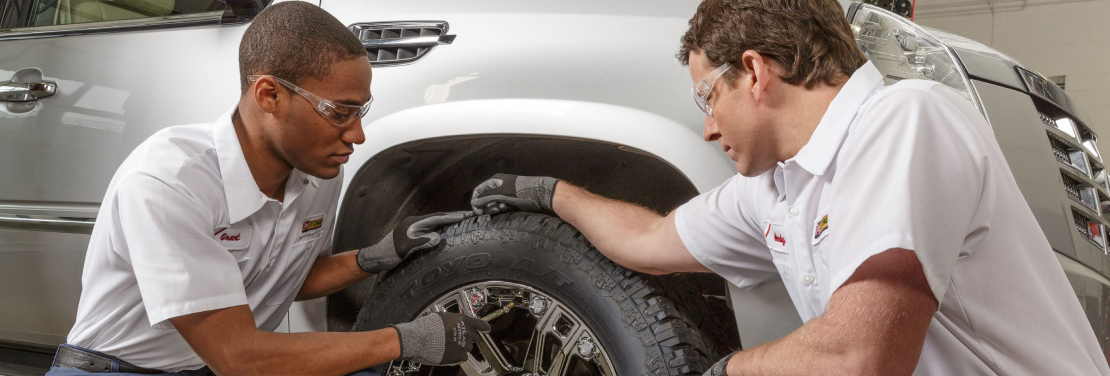Tire Solution: The Impact of Climate Problems
When it concerns making sure optimum performance and security when driving, recognizing the influence of weather conditions on tire service is crucial. From scorching warmth to icy roads, each weather component can dramatically influence tire capability and total driving experience. By delving into the effects of differing weather condition conditions on tires, chauffeurs can obtain important understandings that may enhance their lorry's performance and longevity. In this conversation, we will check out the intricate relationship in between weather and tire solution, dropping light on the importance of weather-specific tire upkeep techniques and factors to consider.
Heat and Tire Performance
When subjected to heats, tires experience modifications in performance that can substantially impact car security and handling. The warm generated from extended driving or hot weather conditions creates the tire rubber to soften, resulting in decreased step life and raised wear. As the rubber ends up being softer, the tire's grip when driving reduces, influencing stopping distances and overall grip. In severe instances, excessive warmth can even create tire blowouts, posing an extreme safety and security risk to the lorry and its residents.
Additionally, high temperatures can speed up the procedure of tire aging, causing the rubber to weaken extra swiftly. To alleviate the results of warm on tire performance, motorists should regularly inspect their tire stress, turn tires to make sure even wear, and check for any kind of signs of damage.
Cold Weather Condition Effects
Cold weather conditions can have a considerable effect on tire performance and safety and security. In cool weather condition, tires may likewise shed air stress much more rapidly, which can influence managing and fuel performance.
To minimize the results of chilly climate on tires, it is essential to regularly inspect tire stress and inflate them to the manufacturer's suggested levels. Using winter season or all-season tires developed for cool climate conditions can likewise boost traction and grip on icy or snowy roadways - tire shop morris. Appropriate tire maintenance, including normal assessments for wear and damages, becomes much more crucial throughout cooler months to guarantee optimum performance and security
Rainy Issues Effect
Tires with damaged footsteps are extra vulnerable to hydroplaning, where a layer of water constructs up in between the road and the tire surface, leading to loss of traction. To battle this, drivers should regularly inspect their tires for adequate step depth and take into consideration investing in tires specifically made for wet problems.

Snow and Tire Security
Snow-covered roads posture special challenges for chauffeurs, highlighting the significance of correct tire selection and maintenance. When driving in snowy problems, having the best tires can make a substantial distinction in security and efficiency. Winter months tires are created with special rubber compounds and tread patterns to offer better grip on snow and ice compared to all-season tires. The deeper footsteps and sipes of winter months tires help grip the road much better, minimizing the risk of sliding and gliding.
Along with making use of winter season tires, it is essential to ensure they are appropriately blown up. Winter can create tire stress to drop, impacting traction and handling (tire shop morris). Frequently inspecting and keeping the correct tire pressure is important for her comment is here ideal efficiency in snowy problems

Weather-Related Tire Maintenance
When faced with different weather, correct tire upkeep comes to be an important element of automobile security and performance. Weather-related tire upkeep incorporates a range of practices targeted at ensuring optimum tire feature and long life in various weather situations. One vital element of weather-related tire upkeep is tire pressure law. Rising and fall temperature levels can create tire stress to vary, impacting grip and fuel effectiveness. Regularly checking and adjusting tire stress according to check my site manufacturer recommendations is necessary for safe driving in altering weather. Furthermore, tire tread deepness plays a substantial function in dealing with different weather condition components. Tires with adequate step depth supply much better hold on damp or icy roadways, lowering the threat of skidding or hydroplaning. When tread wear reaches a particular depth click here for more is vital for keeping traction and stability in negative climate, inspecting tire walk on a regular basis and changing tires. By focusing on weather-related tire upkeep, motorists can improve safety and security, improve car performance, and extend the life-span of their tires.
Conclusion
To conclude, climate condition have a considerable influence on tire efficiency and safety and security. From warm influencing tire pressure and use to winter decreasing traction, it is vital to take into consideration the climate when preserving and utilizing tires. Wet conditions can reduce grasp and bring about hydroplaning, while snow can increase the threat of accidents if tires are not properly outfitted. Weather-related tire maintenance is crucial in making sure optimum efficiency and safety and security when traveling.
In this discussion, we will explore the complex connection in between weather condition conditions and tire solution, dropping light on the importance of weather-specific tire upkeep techniques and considerations.

Comments on “Trusted Tire Shop Morris: Comprehensive Tire Solutions and Exceptional Service”